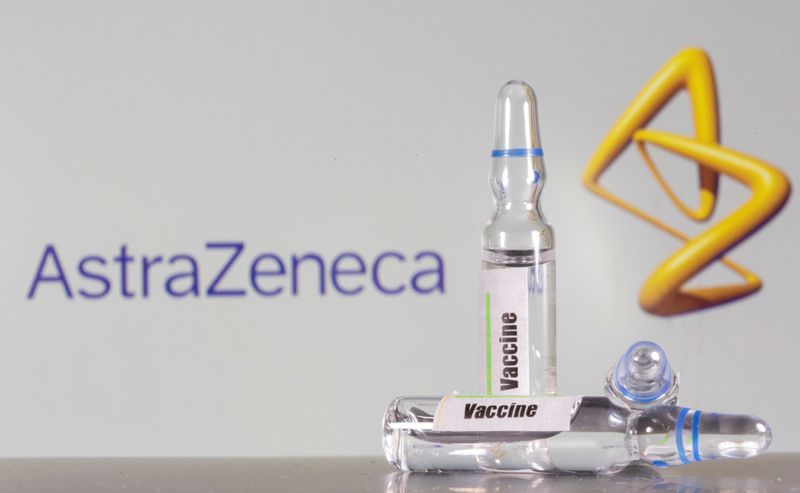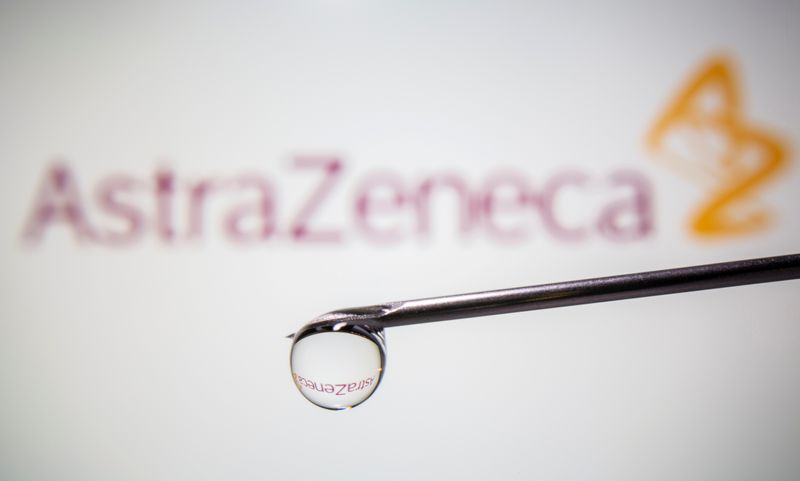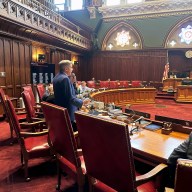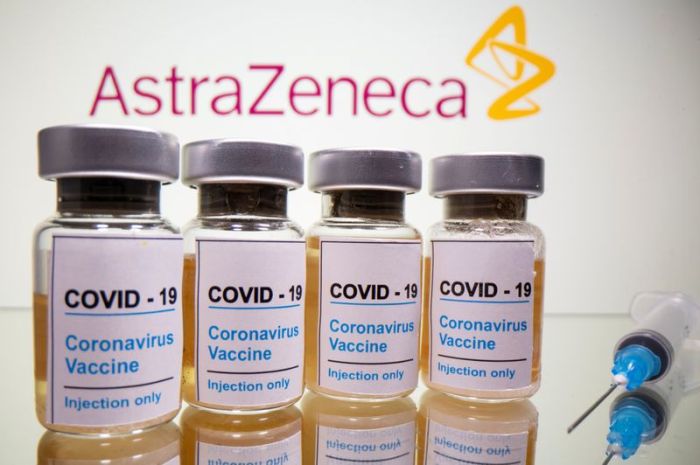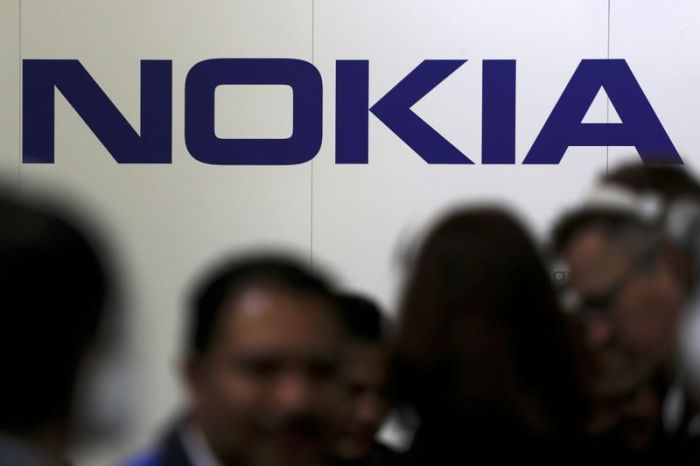LONDON (Reuters) – Days after grabbing headlines with its COVID-19 “vaccine for the world”, AstraZeneca is facing tricky questions about its success rate that some experts say could hinder its chances of getting speedy U.S. and EU regulatory approval.
Several scientists have raised doubts about the robustness of results showing the shot was 90% effective in a sub-group of trial participants who, by error initially, received a half dose followed by a full dose.
“All we have to go on is a limited data release,” said Peter Openshaw, a professor of experimental medicine at Imperial College London. “We have to wait for the full data and to see how the regulators view the results,” he said, adding that U.S. and European regulators “might possibly take a different view” from each other.
British drugmaker AstraZeneca said on Monday that its experimental vaccine, developed with Oxford University, prevented on average 70% of COVID-19 cases in late-stage trials in Britain and Brazil.
While the success rate was 90% in the sub-group of volunteers, the efficacy was 62% if the full dose was given twice, as it was for most participants.
That is well above the 50% efficacy required by U.S. regulators. Europe’s drug regulator has said it will not set a minimum level of efficacy for potential vaccines.
At the heart of concerns, however, is that the trial’s most promising result of 90% comes from a sub-group analysis – a technique many scientists say can produce spurious readings.
“Sub-group analyses in randomised controlled trials are always fraught with difficulties,” said Paul Hunter, a professor of medicine at Britain’s University of East Anglia.
He said, in particular, such analyses increase the risk of “type 1 errors” – in other words, where an intervention is considered to be effective when it is not.
This is in part because the number of participants is greatly reduced in a sub-group – making it harder to be confident that a finding is not just down to chance differences or similarities among participants.
“In order to have faith in the results,” Hunter said, any sub-group analysis “should be sufficiently powered” with large numbers of volunteers to take readings from.
Only 2,741 volunteers were in the sub-group that gave the 90% efficacy read-out, a fraction of the tens of thousands in trials that resulted in the above 90% efficacy data released earlier this month for Pfizer-BioNTech’s and Moderna’s vaccines.
‘DEVIL IN THE DETAIL’
AstraZeneca said the administering of the half dose was reviewed and approved by independent data safety monitors and the UK regulator, adding that the regulator publicly confirmed there was “no concern”.
“We are in discussions with regulators around the world to evaluate these findings and we look forward to the publication of the peer-reviewed results, which has now been submitted to the journal,” a spokesperson added.
Oxford University did not respond immediately to a request for comment.
The U.S. regulator, the Food and Drug Administration (FDA), has not commented on AstraZeneca’s vaccine trial results. The European Medicines Agency said on Thursday it would “assess data on the efficacy and safety of the vaccine in the coming weeks once they have been received from the company”.
The regulatory process has nonetheless been clouded, according to experts, who note crucial gaps in the data AstraZeneca has made public so far.
“The devil is in the detail,” said Danny Altmann, a professor of immunology at Imperial College London. “We’re trying to assess really quite complex trial designs on the basis of little press releases.”
Beyond headline efficacy rates, AstraZeneca’s data release gave little for scientists to work on. It did not say how many infections occurred in the sub-group, for example, or in the group that got two full doses, or in the placebo group.
“A lot of questions are left unanswered,” said Morgane Bomsel, an expert at the French National Centre of Scientific Research, adding: “We are under the impression they (AstraZeneca) are selectively picking out the data.”
‘A NUMBER OF VARIABLES’
Moncef Slaoui, chief scientific adviser for the U.S. government’s vaccine programme Operation Warp Speed, also highlighted gaps.
He said no-one in the subgroup that got the initial half dose was older than 55 – suggesting the regimen’s efficacy in crucial older age groups is unproven in this interim data.
In the group that received a correct full dose followed by a full dose, he noted, older people were included.
Such concerns, and the possible consequences for the speed of regulatory approval, helped AstraZeneca shares hit their lowest level since April on Thursday, having fallen 7% since the company released the data on Monday.
By contrast, Moderna has rallied 22% since releasing its vaccine trial data on Nov. 16 and Pfizer and BioNTech are up 6% and 14% respectively since announcing their successful data on Nov. 9.
“There are a number of variables that we need to understand, and what has been the role of each one of them in achieving the difference in efficacy,” Slaoui told a briefing on Tuesday.
“It is still possible that the difference (in efficacy) is a random difference,” he added. “It’s unlikely, but it’s still possible.”
(Reporting by Kate Kelland in London; Additional reporting by Matthias Blamont in Paris, Ludwig Burger in Frankfurt, and Francesco Guarascio in Brussels; Editing by Josephine Mason and Pravin Char)

